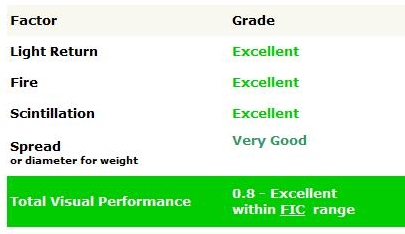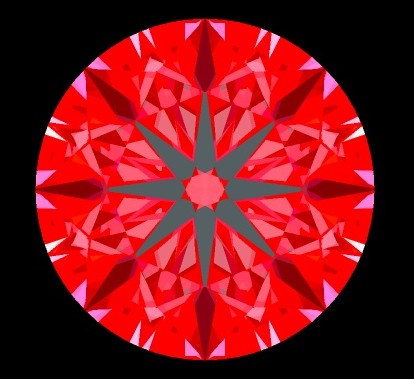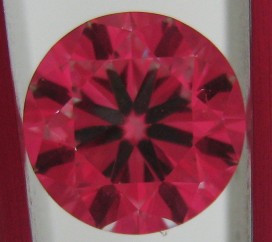The recently patented Holloway Cut Adviser (HCA) is an online tool that helps consumers determines the cut of a diamond. It is simple and free, but not without it’s flaws.
Due to it’s over simplicity, another piece of software, DiamCalc can be used when making a final decision when purchasing a diamond based on proportions alone. DiamCalc costs US$395 (thus should be purchased by the seller), but has a a huge array of features including Ideal-Scope and AGS ASET image generation and photo-realistic models.
To illustrate the benefits of DiamCalc, take a diamond with the following proportions:
- 36.5 degree crown angle
- 40 degree pavillion angle
- 57% table
- 61.5% total depth
- Pointed culet
Plugging these into the Holloway Cut Adviser yields an excellent result – a 0.8:

Bear in mind, this diamond was given a “Very Good” cut grade by the GIA. Therefore, either the GIA cut grading system is flawed, or the HCA is flawed.
On further inspection, DiamCalc produced the following Ideal-Scope image:

And the actual Ideal-Scope image:

Note that both DiamCalc and the Ideal-Scope produced similar images which pointed to the fact that this diamond looked “dark” beneath the table – not quite the “Excellent” grade that the HCA had given it.
One of the main tenets of the HCA is that a large crown angle will be OK, if the pavilion is shallow and vice-versa. Known as the inverse crown-pavilion theory, it is described here. However, as we’ve just seen, there are limits to that theory. Sure, a 41.0 degree pavilion angle and a 34.0 degree crown angle work well together, but it’s a bit far fetched to say a diamond with a 36.5 degree crown angle and a 40.0 degree pavilion angle is “Ideal”.
May 13th, 2008 at 12:35 pm
Does you diam calc consider the effects of minor facets i.e. mains angle versus pavilion angles.
The ideal scope demonstrates a fairly stumpy looking star compared to the diam calc predicted image. This suggests main facets are cut shorter and wider than normal.
May 13th, 2008 at 3:12 pm
Hi Derek
Diam Calc does allows you to input minor facet data. It even allows you to import .srn and .stl files from Sarin and OGI machines.
The reason the arrow heads are like they are in that particular picture is that the stone was being taken very close up and probably at a slight angle. We have since changed the way we take Ideal-Scope and ASET pictures to fix this problem, however, this type of pattern does occur when the girdle is overly painted.
June 9th, 2008 at 12:28 pm
That stone has a painted pavilion. A bad combination in a shallow stone, which is what 36.5 40 is Nikhil
Regards
Garry Holloway
August 6th, 2008 at 3:38 pm
[…] brilliance on your screen?”. The answer to this is YES! With modern technology, such as the Ideal-Scope, The AGS ASET, and others, you can even objectively measure a diamond’s light return and […]
October 6th, 2010 at 11:42 am
Thank you for a really good post. I found it quite useful and will check your site often.